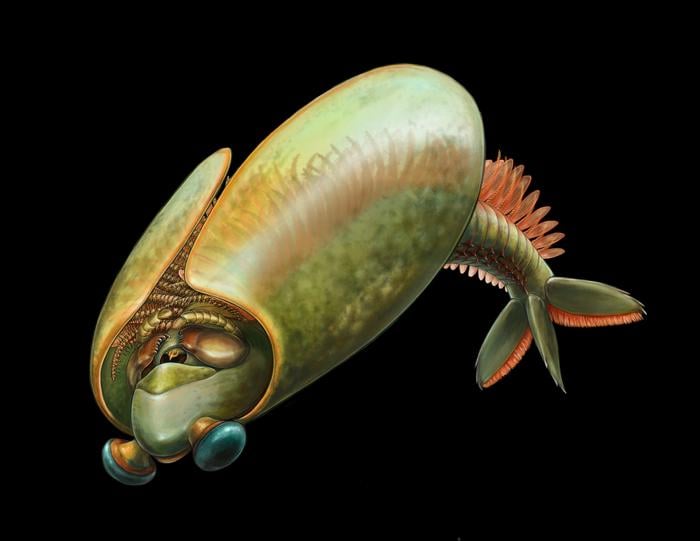A peculiar fossil from the Burgess Shale in British Columbia is shedding new light on the early evolution of mandibulates, a group that includes modern-day crabs, insects, and centipedes. The creature, known as Odaraia, lived over 500 million years ago and has long puzzled scientists with its unusual taco-shaped body.
Mandibles and Fishing Nets: Odaraia’s Unique Adaptations
Researchers from the Royal Ontario Museum (ROM) have made a groundbreaking discovery about Odaraia, identifying a pair of large appendages with jagged edges near its mouth. These structures are clear evidence of mandibles, a key feature of the mandibulate group. This finding finally places Odaraia among the earliest known mandibulates, resolving a century-old mystery about its classification.
Alejandro Izquierdo-López, the study’s lead author, explains the significance: “Odaraia had been beautifully described in the 1980s, but given the limited number of fossils at that time and its bizarre shape, two important questions had remained unanswered: is it really a mandibulate? And what was it feeding on?”
The researchers also uncovered an intricate system of small and large spines on Odaraia’s more than 30 pairs of legs. These spines could intertwine, creating a net-like structure capable of capturing smaller prey. This adaptation suggests that Odaraia was one of the first mandibulates to leave the seafloor and explore the water column, paving the way for the group’s future ecological success.
From Sea Floor to Open Water: Evolving Ecosystems
At nearly 20 centimeters in length, Odaraia was part of a community of large animals that could migrate from the seafloor to the upper layers of the water column. This transition likely enriched marine ecosystems and facilitated the development of more complex food webs.
Jean-Bernard Caron, Richard Ivey Curator at the ROM and co-author of the study, highlights the importance of the Burgess Shale fossils: “The Burgess Shale has been a treasure trove of paleontological information. Thanks to the work we have been doing at the ROM on amazing fossil animals such as Tokummia and Waptia, we already know a substantial amount about the early evolution of mandibulates. However, some other species had remained quite enigmatic, like Odaraia.”
The Burgess Shale is renowned for its exceptional preservation of soft-bodied organisms that would typically decay before fossilization. This unique preservation allows researchers to study delicate structures like Odaraia’s mandibles and leg spines, which are rarely preserved in other fossil deposits.
Why it matters: Understanding the early evolution of mandibulates is crucial, as this group represents over half of all current animal species on Earth. By studying creatures like Odaraia, scientists can gain insights into how major animal groups diversified and adapted to new ecological niches during the Cambrian Explosion, a period of rapid evolutionary innovation that occurred over 500 million years ago.
The research on Odaraia not only resolves longstanding questions about its classification but also provides valuable information about the transition of early arthropods from seafloor-dwelling to free-swimming lifestyles. This shift in ecological strategies likely played a significant role in shaping marine ecosystems and set the stage for the incredible diversity of mandibulates we see today.
As researchers continue to study the Burgess Shale and other Cambrian fossil deposits, we can expect to uncover more fascinating creatures that will help us piece together the story of early animal evolution. The public can view specimens of Odaraia on display at the Willner Madge Gallery, Dawn of Life at the Royal Ontario Museum, offering a tangible connection to this ancient and pivotal period in Earth’s history.


